 Are you struggling with Frustrations With Fastball Velocity Gains? Then this is the article for you!
Are you struggling with Frustrations With Fastball Velocity Gains? Then this is the article for you!
Fastball velocity is often considered the hallmark of a dominant pitcher. The ability to throw hard can intimidate batters, making it an invaluable skill in baseball. A pitcher with high velocity can control the game, striking fear into opponents and limiting their offensive opportunities. However, achieving and maintaining high velocity is not a simple task. Many pitchers face significant challenges and Frustrations With Fastball Velocity. This difficulty arises from the complex interplay of physical conditioning, mechanics, and overall athleticism required to consistently throw fastballs at high speeds.
Traditional training methods that focus solely on arm speed and arm strength often lead to overtraining and injury, which can derail a player's progress and career. These methods tend to isolate the arm, ignoring the essential contributions of the legs, core, and overall body mechanics. Consequently, pitchers may experience short-term gains but at the cost of long-term health and performance. Overuse injuries such as rotator cuff tears, tendinitis, and elbow strain become common, sidelining players and stalling their development. This article will delve into the importance of a holistic approach to developing fastball velocity, highlighting the comprehensive and effective methods used in the TopVelocity programs. By integrating biomechanics, strength training, mobility, nutrition, and recovery, these programs offer a sustainable path to achieving and maintaining high velocity while minimizing the risk of injury.
The Problem with Traditional Training Methods: Frustrations With Fastball Velocity
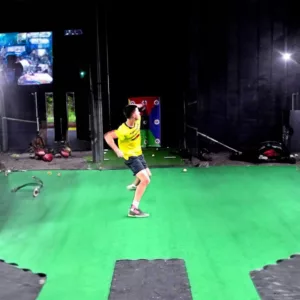 Traditional training methods typically emphasize increasing arm speed and arm strength as the primary means to boost fastball velocity. While these aspects are undeniably important, an overemphasis on them can lead to several significant issues that can hinder a pitcher’s progress and potentially end their career prematurely.
Traditional training methods typically emphasize increasing arm speed and arm strength as the primary means to boost fastball velocity. While these aspects are undeniably important, an overemphasis on them can lead to several significant issues that can hinder a pitcher’s progress and potentially end their career prematurely.
- Overtraining: One of the most common problems associated with traditional training methods is overtraining. When the focus is predominantly on the arm, pitchers are at a higher risk of developing overuse injuries. These injuries include rotator cuff tears, tendinitis, and elbow strain. Overuse injuries occur because the arm muscles and joints are subjected to repetitive stress without sufficient recovery time. The constant strain can lead to inflammation, tears, and other serious conditions that not only halt a pitcher’s progress but can also end their career if not properly managed. Overtraining the arm creates a cycle of injury and recovery that can be difficult to break, leading to long-term issues and diminished performance.
- Imbalanced Training: Traditional methods often ignore the importance of the legs, core, and overall body strength in generating fastball velocity. This imbalance in training leads to a lack of overall athleticism and power. The arm alone cannot generate the necessary force to achieve high velocity; it must work in concert with the rest of the body. The legs and core are critical for creating a strong base and generating the initial power needed for a pitch. Neglecting these areas results in pitchers who may have strong arms but lack the necessary lower body strength and core stability to maximize their velocity. This imbalance not only limits their performance but also increases the risk of injury, as the arm is forced to compensate for the lack of power from the rest of the body.
- Risk of Injury: Overloading the arm without considering the kinetic chain’s role significantly increases the risk of injury. The kinetic chain refers to the interconnected system of muscles, joints, and bones that work together to produce movement. In pitching, this chain starts from the ground up, involving the legs, core, and arm in a coordinated effort to deliver the ball with maximum velocity. Traditional training methods that focus solely on the arm fail to utilize this kinetic chain effectively. As a result, pitchers are more prone to injuries because they are not using their body’s full potential to generate power. Proper mechanics and a balanced training approach are essential for sustainable velocity gains. By neglecting these aspects, traditional methods set pitchers up for failure, as the increased stress on the arm leads to a higher incidence of injuries.
In summary, traditional training methods that prioritize arm speed and arm strength at the expense of a holistic approach can cause overtraining, imbalanced training, and a higher risk of injury. These issues highlight the need for a more comprehensive training regimen that incorporates the entire body, utilizes proper mechanics, and emphasizes recovery and injury prevention.
Understanding the Kinetic Chain: Frustrations With Fastball Velocity
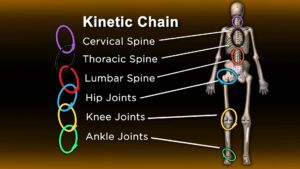 The kinetic chain is a fundamental concept in sports science that describes how the body’s interconnected segments work together to produce movement. In the context of pitching, the kinetic chain is especially important because it explains how energy and force are generated and transferred through the body to achieve optimal performance. Understanding and optimizing this kinetic chain is crucial for maximizing fastball velocity while minimizing the risk of injury.
The kinetic chain is a fundamental concept in sports science that describes how the body’s interconnected segments work together to produce movement. In the context of pitching, the kinetic chain is especially important because it explains how energy and force are generated and transferred through the body to achieve optimal performance. Understanding and optimizing this kinetic chain is crucial for maximizing fastball velocity while minimizing the risk of injury.
- Lower Body: The kinetic chain begins with the lower body, specifically the legs. The legs are responsible for generating the initial force required for a powerful pitch. This force is created through a combination of leg drive and ground reaction forces. When a pitcher pushes off the mound with their back leg, they generate significant power that is then transferred up through the body. The hips play a crucial role in this process, acting as a bridge between the lower and upper body. Proper leg mechanics and strength are essential for creating a solid foundation and initiating the kinetic chain effectively.
- Core: The core, consisting of the abdominal muscles, obliques, and lower back, is the next critical component of the kinetic chain. The core’s primary function is to stabilize the body and transfer the energy generated by the lower body to the upper body. A strong and stable core ensures that the force generated by the legs is efficiently passed through the torso without any loss of energy. This transfer of energy is vital for maintaining the momentum needed for a high-velocity pitch. Core strength and stability also help in maintaining proper posture and balance during the pitching motion, which is essential for both performance and injury prevention.
- Upper Body: The final segment of the kinetic chain is the upper body, which includes the shoulders, arms, and hands. The upper body’s role is to execute the pitch by utilizing the energy transferred from the lower body and core. The shoulder acts as a pivot point, allowing for the arm to move quickly and efficiently. The arm, particularly the forearm and wrist, helps to control and direct the ball towards the target. Proper mechanics in the upper body are crucial for ensuring that the energy generated earlier in the kinetic chain is not wasted. Efficient upper body mechanics also reduce the stress on the shoulder and elbow, minimizing the risk of overuse injuries.
Understanding the kinetic chain and its components allows pitchers to optimize their movements and maximize their performance. By ensuring that each segment of the body works in harmony, pitchers can generate greater force and velocity with less effort. This holistic approach to pitching not only enhances performance but also plays a significant role in injury prevention. When the kinetic chain is optimized, the stress and strain on individual body parts, particularly the arm, are reduced. This balanced distribution of force helps to protect the joints and muscles from overuse and injury.
In summary, the kinetic chain is a concept that highlights the importance of the body’s interconnected segments working together to produce efficient and powerful movements. In pitching, optimizing the kinetic chain involves focusing on the lower body for force generation, the core for energy transfer and stabilization, and the upper body for executing the pitch. By understanding and applying these principles, pitchers can achieve higher fastball velocities and reduce their risk of injury, leading to better performance and longevity in the sport.
The TopVelocity Approach: Frustrations With Fastball Velocity
 The TopVelocity programs, developed by Brent Pourciau, emphasize a holistic approach to developing fastball velocity. These programs are designed to integrate various elements of athletic performance to ensure pitchers can achieve sustainable velocity gains while minimizing the risk of injury. Unlike traditional training methods that focus primarily on arm speed and strength, the TopVelocity approach takes a comprehensive view, addressing all aspects of the pitcher's body and mechanics.
The TopVelocity programs, developed by Brent Pourciau, emphasize a holistic approach to developing fastball velocity. These programs are designed to integrate various elements of athletic performance to ensure pitchers can achieve sustainable velocity gains while minimizing the risk of injury. Unlike traditional training methods that focus primarily on arm speed and strength, the TopVelocity approach takes a comprehensive view, addressing all aspects of the pitcher's body and mechanics.
- Biomechanics: A critical component of the TopVelocity programs is a strong emphasis on biomechanics. By focusing on proper pitching mechanics, pitchers learn to efficiently use their entire kinetic chain. This means generating power from the legs, transferring it through the core, and delivering it through the arm in a smooth, coordinated motion. Proper mechanics not only help in maximizing velocity but also in reducing the strain on the arm, thereby preventing injuries. The program includes detailed biomechanical assessments and drills that are specifically designed to improve the efficiency and effectiveness of a pitcher's movements.
- Strength and Conditioning: Building overall body strength, particularly in the legs and core, is another cornerstone of the TopVelocity approach. The legs and core are the primary power sources in pitching, and their strength directly influences the speed and power of the throw. The program incorporates strength training exercises that target these areas, ensuring that pitchers develop the necessary muscular support for high-velocity pitching. This balanced approach to strength training helps in creating a strong foundation, enabling pitchers to throw harder while maintaining control and stability.
- Mobility and Flexibility: Ensuring that joints and muscles can move through the necessary range of motion without restriction is essential for effective pitching. The TopVelocity programs prioritize mobility and flexibility to prevent injuries and enhance performance. Exercises and routines are included to improve the mobility of key areas such as the hips, shoulders, and thoracic spine. By maintaining flexibility, pitchers can achieve a greater range of motion, which is crucial for generating speed and power in their throws.
- Nutrition and Recovery: Proper nutrition and recovery are often overlooked aspects of athletic training, but they are vital components of the TopVelocity approach. Providing the body with the necessary nutrients supports muscle growth, repair, and overall health. The program includes guidance on nutrition, emphasizing the importance of a balanced diet rich in proteins, carbohydrates, fats, vitamins, and minerals. Recovery strategies are also integral, ensuring that pitchers get adequate rest and recovery time to repair tissues, replenish energy stores, and prevent overtraining. This holistic view of nutrition and recovery helps pitchers sustain their training intensity and continue making progress without burning out.
By integrating these key elements—biomechanics, strength and conditioning, mobility and flexibility, and nutrition and recovery—the TopVelocity programs offer a comprehensive solution to developing fastball velocity. This holistic approach ensures that pitchers not only achieve higher velocity but do so in a way that promotes long-term health and performance.
Key Components of the TopVelocity Programs: Frustrations With Fastball Velocity
 Mobility and Flexibility: Mobility and flexibility are foundational components of the TopVelocity programs. Proper mobility allows pitchers to move through the required ranges of motion without restriction, reducing the risk of injury and enhancing performance. Flexibility ensures that muscles can stretch and contract efficiently during the pitching motion.
Mobility and Flexibility: Mobility and flexibility are foundational components of the TopVelocity programs. Proper mobility allows pitchers to move through the required ranges of motion without restriction, reducing the risk of injury and enhancing performance. Flexibility ensures that muscles can stretch and contract efficiently during the pitching motion.- Strength and Conditioning: Strength and conditioning are critical for developing the power needed for high-velocity pitching. The TopVelocity programs focus on building strength in the legs, core, and upper body. This balanced approach ensures that the entire kinetic chain is strong and capable of transferring energy efficiently from the lower body to the arm.
- Biomechanics and Pitching Mechanics: Biomechanics and pitching mechanics are at the heart of the TopVelocity approach. Proper mechanics are essential for maximizing velocity and minimizing injury risk. The programs include detailed biomechanical assessments and drills designed to improve pitching efficiency and power.
- Nutrition and Recovery: Nutrition and recovery are often overlooked but are vital components of any successful training program. The TopVelocity programs provide guidance on proper nutrition to fuel the body and promote muscle growth and recovery. Adequate rest and recovery are emphasized to allow the body to repair and strengthen after intense training sessions.
Symptoms and Signs of Ineffective Training: Frustrations With Fastball Velocity
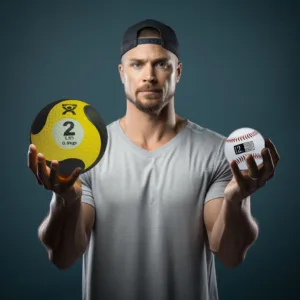 Ineffective training can significantly hinder an athlete's progress and performance, often manifesting through various symptoms and signs that should not be ignored. Recognizing these signs early can help prevent long-term damage and allow for adjustments to be made to the training regimen.
Ineffective training can significantly hinder an athlete's progress and performance, often manifesting through various symptoms and signs that should not be ignored. Recognizing these signs early can help prevent long-term damage and allow for adjustments to be made to the training regimen.
- Overtraining Symptoms: One of the most common signs of ineffective training is overtraining. Athletes experiencing overtraining often show persistent fatigue that doesn't go away with rest. This chronic exhaustion leads to decreased performance, as the body is unable to fully recover between training sessions. Overtraining also makes athletes more susceptible to injuries, as their muscles, tendons, and ligaments are constantly stressed without adequate recovery time. Other signs of overtraining include frequent illnesses, mood disturbances, and difficulty sleeping, all of which indicate that the body is under excessive strain and unable to cope with the training load.
- Arm Fatigue and Pain: Arm fatigue and pain are clear indications that the arm is being overused, often due to training methods that focus too heavily on arm speed and strength. When the arm is overworked without sufficient support from the rest of the body, it leads to excessive wear and tear on the muscles and joints. This can result in conditions such as tendinitis, rotator cuff injuries, and elbow strain. Pain and discomfort in the arm during or after pitching are red flags that the training program may be placing too much stress on the arm without adequately engaging the kinetic chain. Ignoring these symptoms can lead to more severe injuries that may require extended periods of rest or even surgical intervention.
- Imbalanced Training: Ineffective training often results in imbalanced development of the body, where certain areas become overly strong while others remain weak or inflexible. This lack of strength or mobility in specific regions leads to inefficient movement patterns. For instance, a pitcher who has strong arm muscles but weak legs and core will struggle to generate power efficiently, as the lower body and core are crucial for initiating and transferring force in the pitching motion. Imbalanced training can also cause compensatory movements, where the body adapts to weaknesses by placing undue stress on other areas. This not only reduces overall performance but also increases the risk of injuries. Signs of imbalanced training include uneven muscle development, limited range of motion, and poor coordination during complex movements.
Recognizing and Addressing Ineffective Training
To prevent these symptoms and signs from progressing, it is crucial to regularly assess and adjust training programs. This involves:
- Monitoring Performance Metrics: Keeping track of performance metrics such as velocity, accuracy, and endurance can help identify decreases in performance that may indicate overtraining or imbalanced training.
- Regular Health Assessments: Regular check-ups with sports medicine professionals can detect early signs of overuse injuries and other health issues related to training.
- Adjusting Training Loads: Modifying the intensity, volume, and frequency of training sessions can help prevent overtraining and allow for better recovery.
- Incorporating Full-Body Workouts: Ensuring that training programs include exercises that strengthen the entire kinetic chain, not just the arm, can promote balanced development and efficient movement patterns.
By paying attention to these symptoms and signs, athletes can take proactive steps to ensure their training is effective and sustainable, leading to better performance and a longer career.
Causes and Risk Factors for Frustrations With Fastball Velocity
 Frustrations With Fastball Velocity can arise from a variety of causes and risk factors, making it challenging for athletes to achieve their performance goals. Understanding these underlying issues is crucial for developing effective training programs and preventing setbacks. Several key factors contribute to training frustrations:
Frustrations With Fastball Velocity can arise from a variety of causes and risk factors, making it challenging for athletes to achieve their performance goals. Understanding these underlying issues is crucial for developing effective training programs and preventing setbacks. Several key factors contribute to training frustrations:
- Biological Factors: Individual differences in anatomy and physiology play a significant role in how athletes respond to training. These biological factors include genetics, muscle fiber composition, metabolic rates, and overall physical condition. For example, some athletes may naturally have a higher proportion of fast-twitch muscle fibers, which are beneficial for explosive movements like pitching. Others might have a predisposition to certain injuries due to their anatomical structure, such as shoulder impingements or elbow valgus. Additionally, age and gender can influence how the body responds to training loads and recovers from exertion. These inherent biological differences mean that a one-size-fits-all approach to training is often ineffective, leading to frustration when expected gains are not realized.
- Environmental Influences: The environment in which an athlete trains can significantly impact their progress. Access to high-quality training facilities, state-of-the-art equipment, and expert guidance are critical for optimal performance development. Athletes who lack these resources may find it challenging to reach their full potential. For instance, inadequate facilities might limit the variety and intensity of workouts, while the absence of knowledgeable coaches can lead to improper technique and training errors. Moreover, external factors such as weather conditions, socio-economic status, and support from family and friends can also influence an athlete's training environment. Athletes training in less supportive or resource-poor environments are more likely to encounter frustrations due to these limitations.
- Lifestyle and Training Habits: An athlete’s lifestyle and training habits are pivotal in determining their success and satisfaction with their training. Poor nutrition can impede recovery and energy levels, making it difficult to perform at one’s best. Athletes need a balanced diet rich in essential nutrients to fuel their bodies and support muscle growth and repair. Inadequate rest and sleep deprivation are other critical factors that can hinder progress. Recovery is as important as training itself, and without sufficient rest, the body cannot heal and strengthen effectively. Additionally, improper training techniques, such as overtraining or using incorrect form, can lead to setbacks and injuries. Consistently neglecting these aspects can result in chronic fatigue, diminished performance, and increased risk of injury, all of which contribute to training frustrations.
Addressing Frustrations With Fastball Velocity
To mitigate these causes and risk factors, athletes and coaches should adopt a comprehensive and personalized approach to training. Here are some strategies:
- Personalized Training Plans: Tailoring training programs to the individual needs and biological characteristics of each athlete can help optimize performance and reduce Frustrations With Fastball Velocity. This includes considering factors like muscle composition, injury history, and recovery rates.
- Improving Access to Resources: Investing in better training facilities, equipment, and expert coaching can significantly enhance training outcomes. Providing athletes with access to sports science professionals, such as nutritionists and physiotherapists, can also be beneficial.
- Promoting Healthy Lifestyle Choices: Educating athletes about the importance of nutrition, rest, and proper recovery techniques can help them make better lifestyle choices. Encouraging a balanced diet, adequate sleep, and active recovery practices can improve overall performance and reduce the risk of injury.
- Fostering a Supportive Environment: Creating a positive and encouraging training atmosphere can help athletes stay motivated and focused. Support from coaches, family, and peers plays a crucial role in an athlete’s mental and emotional well-being, which is essential for long-term success.
By understanding and addressing these causes and risk factors, athletes can overcome training frustrations and achieve their performance goals more effectively.
Diagnosis and Tests for Training Effectiveness: Frustrations With Fastball Velocity
 Assessing the effectiveness of a training program is crucial for optimizing performance and preventing injuries. Various diagnostic tools and tests can provide valuable insights into an athlete's progress and highlight areas needing improvement. Here are some key methods used in evaluating training effectiveness:
Assessing the effectiveness of a training program is crucial for optimizing performance and preventing injuries. Various diagnostic tools and tests can provide valuable insights into an athlete's progress and highlight areas needing improvement. Here are some key methods used in evaluating training effectiveness:
- Biomechanical Analysis: A comprehensive biomechanical analysis involves evaluating an athlete's pitching mechanics to identify inefficiencies and potential areas for improvement. This analysis typically uses high-speed cameras, motion capture systems, and advanced software to track and measure the movements of different body segments during pitching. By analyzing the data, coaches can pinpoint specific mechanical flaws that may be limiting velocity or contributing to injury risk. For example, improper hip rotation or an early shoulder rotation can be detected and corrected through targeted drills and exercises. Regular biomechanical assessments help ensure that the athlete maintains proper form and continues to develop efficient movement patterns.
- Strength and Conditioning Tests: Measuring an athlete's strength, power, and endurance levels is essential for ensuring balanced development and preventing overtraining. Various tests, such as one-rep max lifts, vertical jumps, and sprint tests, can provide insights into an athlete's muscular strength and explosive power. Endurance tests, like the beep test or time trials, assess cardiovascular fitness and stamina. These tests help coaches design individualized strength and conditioning programs that target specific weaknesses and promote overall athleticism. Regularly monitoring these metrics allows for adjustments in training intensity and volume, ensuring optimal progress without overloading any particular body part.
- Mobility and Flexibility Assessments: Ensuring that joints and muscles can move through their full range of motion without restriction is critical for both performance and injury prevention. Mobility and flexibility assessments involve testing the range of motion in various joints, such as the shoulders, hips, and ankles, as well as the flexibility of muscles like the hamstrings and quadriceps. Tools like goniometers and flexibility tests, such as the sit-and-reach test, are commonly used in these assessments. Identifying areas of tightness or limited mobility enables the incorporation of specific stretching and mobility exercises into the athlete's training regimen. This helps to prevent compensatory movements that could lead to imbalances and injuries.
Implementing Diagnostic Tools in Training
Incorporating these diagnostic tools and tests into a training program provides a comprehensive understanding of an athlete's current state and progress. It allows for a more personalized approach to training, addressing individual needs and ensuring balanced development. Regular assessments also help in tracking progress over time, making it easier to identify trends and make data-driven adjustments to the training plan.
By using biomechanical analysis, strength and conditioning tests, and mobility and flexibility assessments, athletes and coaches can create more effective training programs that enhance performance and reduce the risk of injury.
Final Section: Take Your Game to the Next Level
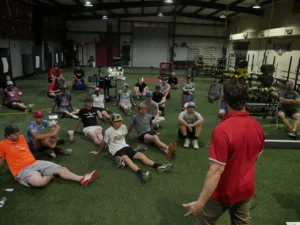 Achieving and sustaining high levels of fastball velocity requires a holistic approach that integrates biomechanics, strength and conditioning, mobility and flexibility, and proper nutrition and recovery. The TopVelocity programs are designed to provide pitchers and position players with the tools and knowledge they need to reach their full potential and minimize the risk of injury.
Achieving and sustaining high levels of fastball velocity requires a holistic approach that integrates biomechanics, strength and conditioning, mobility and flexibility, and proper nutrition and recovery. The TopVelocity programs are designed to provide pitchers and position players with the tools and knowledge they need to reach their full potential and minimize the risk of injury.
If you're serious about taking your game to the next level, consider attending the 3X Velocity Camp for pitchers or the 2X Velocity Camp for position players. These camps offer intensive, hands-on training sessions that focus on all aspects of the kinetic chain, ensuring that every part of your body works together efficiently to maximize your performance.
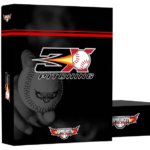 3X Velocity Camp for Pitching Velocity: The 3X Velocity Camp is specifically designed for pitchers looking to increase their fastball velocity. At this camp, you'll receive:
3X Velocity Camp for Pitching Velocity: The 3X Velocity Camp is specifically designed for pitchers looking to increase their fastball velocity. At this camp, you'll receive:
- Comprehensive biomechanical assessments to identify and correct inefficiencies in your pitching mechanics.
- Customized strength and conditioning programs to build the necessary power and endurance.
- Mobility and flexibility training to enhance your range of motion and prevent injuries.
- Nutritional guidance to support your training and recovery.
For more information and to register, visit 3X Velocity Camp.
 2X Velocity Camp for Position Player Velocity: The 2X Velocity Camp is tailored for position players aiming to enhance their throwing velocity and overall athletic performance. At this camp, you'll benefit from:
2X Velocity Camp for Position Player Velocity: The 2X Velocity Camp is tailored for position players aiming to enhance their throwing velocity and overall athletic performance. At this camp, you'll benefit from:
- In-depth biomechanical analysis to optimize your throwing mechanics.
- Targeted strength and conditioning routines to improve your overall power and agility.
- Mobility and flexibility exercises to ensure you can move freely and efficiently on the field.
- Nutritional strategies to fuel your body and aid in recovery.
For more details and to sign up, check out 2X Velocity Camp.
Both camps provide an opportunity to learn from experienced coaches and trainers who are dedicated to helping you achieve your athletic goals. By attending these camps, you'll gain access to the latest training techniques and scientific insights that have helped countless athletes succeed.
Don't miss this chance to elevate your performance and achieve new levels of velocity. Sign up for the 3X Velocity Camp for pitchers or the 2X Velocity Camp for position players today, and start your journey towards becoming a stronger, faster, and more resilient athlete.
For more exclusive content visit TopVelocity Patreon!


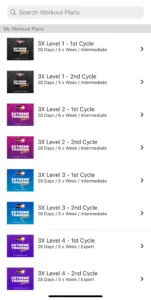 Mobility and Flexibility: Mobility and flexibility are foundational components of the TopVelocity programs. Proper mobility allows pitchers to move through the required ranges of motion without restriction, reducing the risk of injury and enhancing performance. Flexibility ensures that muscles can stretch and contract efficiently during the pitching motion.
Mobility and Flexibility: Mobility and flexibility are foundational components of the TopVelocity programs. Proper mobility allows pitchers to move through the required ranges of motion without restriction, reducing the risk of injury and enhancing performance. Flexibility ensures that muscles can stretch and contract efficiently during the pitching motion.

